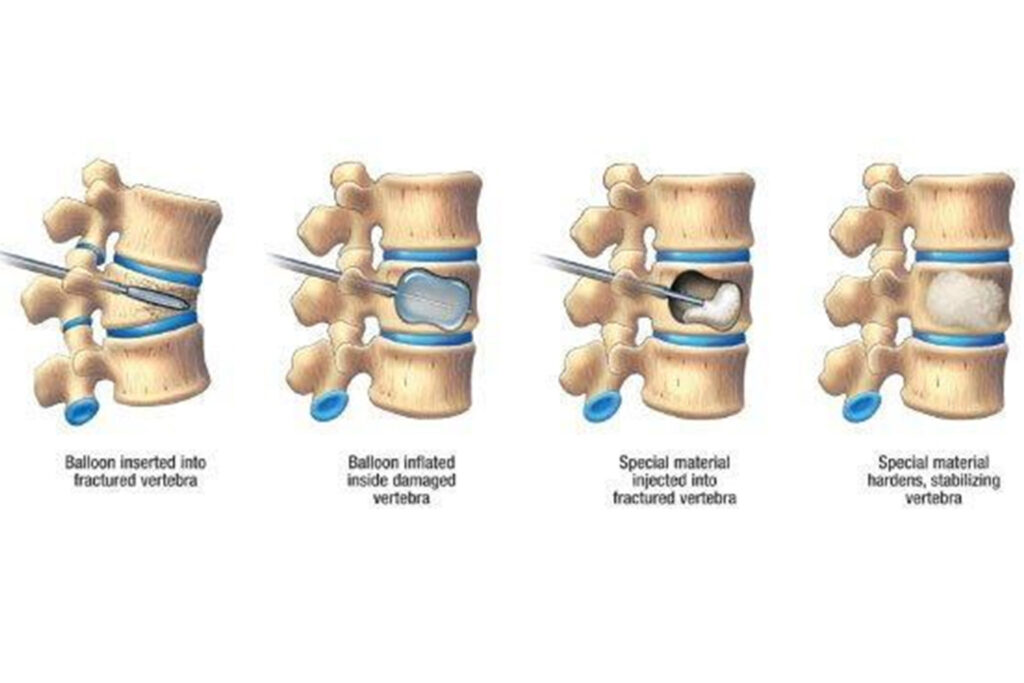Vertebroplasty
Vertebroplasty
Vertebroplasty is a minimally invasive medical procedure used to treat compression fractures in the spine, particularly those caused by osteoporosis. During vertebroplasty, a special cement is injected into the fractured vertebra to stabilize and strengthen it.

Preparation:
- Medical Evaluation: Before the procedure, you will undergo a medical evaluation, including imaging studies (X-rays, CT scans, or MRI) to identify the location and extent of the vertebral compression fracture.
- Discussion with Healthcare Provider: Your healthcare provider will discuss the procedure with you, explain potential benefits and risks, and answer any questions you may have.
During the Procedure:
- Positioning: You will likely lie face down on an X-ray table. The procedure is often performed under local anaesthesia to numb the skin and deeper tissues.
- Fluoroscopy Guidance: Using fluoroscopy (real-time X-ray), the doctor will guide a needle into the fractured vertebra through a small incision in the skin.
- Cement Injection: Once the needle is in the correct position, a special bone cement (usually polymethylmethacrylate) is injected into the fractured
vertebra. The cement hardens quickly, providing stability to the vertebra. - Monitoring: Throughout the procedure, the healthcare team monitors the injection process to ensure the accurate placement of the cement.
After the Procedure:
- Observation: After the injection, you may be observed for a short period in a recovery area to monitor for any immediate complications.
- Pain Relief: Many patients experience pain relief shortly after the procedure due to the stabilization of the fractured vertebra.
- Activity: You may be encouraged to resume normal activities gradually, but specific post-procedure instructions will be provided by your healthcare team.
Some quick information
Our goal is to help the patient regain their quality of life
In our pain clinic, we provide pain relief so you can regain your identity.

